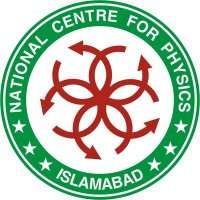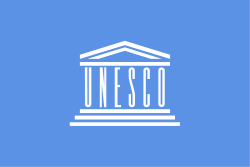National Centre for Physics
 | |
| Established | 27 January 1999 |
|---|---|
Field of research | |
| Director | Dr. Hafeez R. Hoorani |
| Professor Riazuddin | |
| Address | Shahdra Valley Road |
| Location | Islamabad, Pakistan |
| Campus | Quaid-i-Azam University |
Collaborations | |
| Website |
www |
The National Centre for Physics (Urdu: قومی انسٹی ٹیوٹ طبیعیات کے لئے), known as NCP, is an academic physics and mathematical sciences national research institute located in Islamabad— federal capital of the Islamic Republic of Pakistan. Since 1999, the Pakistan Government had the jurisdiction of the institute until March 2004 when the institute was made an autonomous scientific organisation in April 2004, though the funding do arrange by the Pakistan Government.[1] Establishment of the NCP was first proposed in 1951. It is under the de facto control of the Strategic Plans Division of the Pakistan Army.[2]
Since its inception in 1999, the institute operates quadripartite supervision of ICTP, PAEC, INSC, and CERN, and main function is to provide the particle accelerators and other infrastructure needed for theoretical and high-energy physics research. As of today, the NCP emerged as world's one of the leading particle physics institute producing hundreds of papers by world's scientists who joined this institute, and numerous scientific experiments have been constructed at NCP by national and international collaborations to make use of them.
History
Origins
Establishing world-class physics research institutes was proposed by a number of scientists. The roots of NCP institutes go back to when professor Abdus Salam, after receiving his doctorate in physics, came back to Pakistan in 1951. Joining his alma mater, Government College University as Professor of Mathematics in 1951, Salam made an effort to establish the physics institute but was unable to do so. The same year, he became chairman of the Mathematics Department of the Punjab University where he tried to revolutionise the department by introducing the course of Quantum Mechanics necessary for undergraduate students, but it was soon reverted by the vice-chancellor. He soon faced the choice between intellectual death or migration to the stimulating environment of a western institutions. This choice, however, left a deep impression on him and was behind his determination to create an institution to which physicists from developing countries would come as a right to interact with their peers from industrially advanced countries without permanently leaving their own countries. This resulted in founding to the International Centre for Theoretical Physics (ICTP) by Professor Abdus Salam in Italy.
INSC and INP
In 1974, Prof. Abdus Salam visualised the need of an institution where experts from the industrialised nations and learners from the developing countries could get together for a couple of weeks once a year to exchange views on various subjects of current interest in Physics and allied sciences. His suggestion was accepted by Chairman of Pakistan Atomic Energy Commission (PAEC) Munir Ahmad Khan and it was the year 1976 when the first International Nathiagali Summer College on Physics and Contemporary Needs (INSC) was inaugurated at Nathiagali, with co-sponsorship of ICTP and PAEC, under the directorship of Prof. Riazuddin, a pupil student of Abdus Salam. The same year, Ishfaq Ahmad established the Institute of Nuclear Physics at the University of Engineering and Technology of Lahore where Abdus Salam was invited to give first lectures on particle physics and quantum mechanics.
Since then, it has been regularly held without break and it is a great credit to Prof. Riazuddin for his dedication and commitment as such type of international scientific gathering in a developing country like Pakistan presents a major step for the promotion of science. A major aim and goal, Prof. Abdus Salam had in his mind when he made his original proposal to PAEC in 1974 that Nathiagali Summer College would evolve into a full-fledged Centre for Physics on the pattern of ICTP. To transform his vision to reality, his student Prof. Riazuddin played a major role.
Foundation
The National Center for Physics came into reality when Prof. Riazuddin arranged a one-day symposium on Frontiers of Fundamental Physics on 27 January 1999 at the Institute of Physics of Quaid-e-Azam University, only seven months before the recent tests, (Chagai-I). All the leading scientists of the country and some visitors from CERN attended this symposium and they provided their support. Prof. Riazuddin being the founding father of NCP, was its first Director-General and it was inaugurated by Dr. Ishfaq Ahmad, Chairman of Pakistan Atomic Energy Commission during this period, on 16 May 2000. The Director General of European Organization for Nuclear Research (CERN), Dr. Luciano Maiani and distinguished members of his delegation, the Vice-Chancellor of Quaid-i-Azam University, Dr. Tariq Saddiqui and other dignitaries, witnessed the inauguration.[1] The first academic faculty of this institute were included Munir Ahmad Khan, Pervez Hoodbhoy, Fiazuddin, Masud Ahmad, and Ishfaq Ahmad, who first presented their physics papers to the institutes and CERN.
In 2008, Dr. Hamid Saleem became its Director-General after, his predecessor and founding father of NCP, Prof. Riazuddin, who was made lifetime Director General Emeritus. The vision of Prof. Riazuddin to make NCP one of the leading Physics institute of Pakistan is now being carried by Dr. Hamid Saleem.
NCP offers research in different branches of Physics such as particle Physics, computational physics, Astrophysics, Cosmology, Atmospheric physics, Atomic, molecular, and optical physics, Chemical physics, Condensed matter physics, (Fluid dynamics, Laser Physics, Mathematical physics, Plasma Physics·, Quantum field theory, Nano Physics, Quantum information theory
Collaboration with CERN
NCP is incollaborating with Cern in the field of experimental HEP. NCP and CERN are involved in the development, testing and fabrication of 432 Resistive Plate Chambers (RPC) required for the CMS muon detector at CERN. The RPC has an excellent time resolution i.e. of the order of 1–2 nanoseconds and it will be used for the bunch tagging at LHC. At the national level, this project is a joint collaboration of NCP and PAEC, whereas at international level, NCP also collaborating with Italy, China, South Korea and US.
The RPC is a gaseous detector made using two parallel-plates of bakelite with high resistivity. Each RPC for CMS will be equipped with 96 electronic channels, which will be readout are based on 0.14 micrometre BiCMOS technology. For the complete system, number of readout channels are around 50,000. RNCP has an experimental high energy physics laboratory which is equipped with the high speed and advanced data acquisition system based on VME standards. This laboratory is used for prototyping and testing of RPCs at present.
Advanced Scientific Computing
High performance and data intense computing is the back bone of modern-day science. There are stringent requirements for computing at LHC. To exploit the full physics potential of LHC data in comprehensive manner. NCP will require high performance computing for accelerator physics, computational condensed matter physics and theoretical particle physics. For accessing and managing the LHC data novel techniques like the concept of data and computing grids are used. CERN has evolved a new project called the LHC Computing Grid (LCG). NCP is a partner of CERN in this project and it is the only LCG node in Pakistan.
International Centre for Theoretical Physics (ICTP)
NCP signed a memorandum of understanding during dr. K. R. Sreenivasan, Director ICTP's visit to Pakistan from 26 to 30 June 2005. In addition, the Centre carries out research in areas that are not covered by any institute of Physics. One such area being pursued by the Centre involves a number of activities in Experimental High-Energy Physics through a co-operative agreement with CERN in Geneva, Switzerland. Besides this, NCP has collaborations with several international institutes and universities in the field of theoretical physics including AS-ICTP, Trieste, Italy; Centre for Plasma Astrophysics (CPA), K-Leuven University, Belgium; Tokyo University, Tokyo, Japan; Ruhr University, Bochum (RUB), Germany and many others. Several research papers are published in reputed international journals each year from NCP through national and international collaborations.
Project and activities
- The Synchrotron Radiation Source (SRS), now deactivated.
- Grid Computing for LHC Data Analysis
- Pelletron (accelerator), an electron accelerator previously known as ERLP (Energy Recovery Linac Prototype).
- Tandem electrostatic accelerators,a negatively charged ion gains energy by attraction to the very high positive voltage at the geometric centre of the pressure vessel.
- The New Light Source, a project which has evolved from the previous 4GLS project.
- Monte Carlo Generators, an electron accelerator.
- Compact Muon Solenoid
Global co-operation
RNCP and the Other independent countries have signed formal Memorandum of Understanding agreements are below:
 Italy
Italy United Kingdom
United Kingdom United States
United States European Union
European Union China
China Japan
Japan.svg.png) Belgium
Belgium Germany
Germany Sweden
Sweden Norway
Norway France
France Switzerland
Switzerland India
India-
 European Commission
European Commission -
 UNESCO
UNESCO
See also
- Riazuddin (physicist)
- Munir Ahmad Khan
- Ishfaq Ahmad
- Pervez Hoodbhoy
- Pakistan Atomic Energy Commission (PAEC)
- European Organization for Nuclear Research
- International Centre for Theoretical Physics
References
External links
- National Centre for Physics
- CERN page on NCP
- http://www.dailytimes.com.pk/default.asp?page=2009\04\07\story_7-4-2009_pg11_9
- http://www.cpe-khi.org/activities.html
- http://www.gafp.org.pk/members.htm